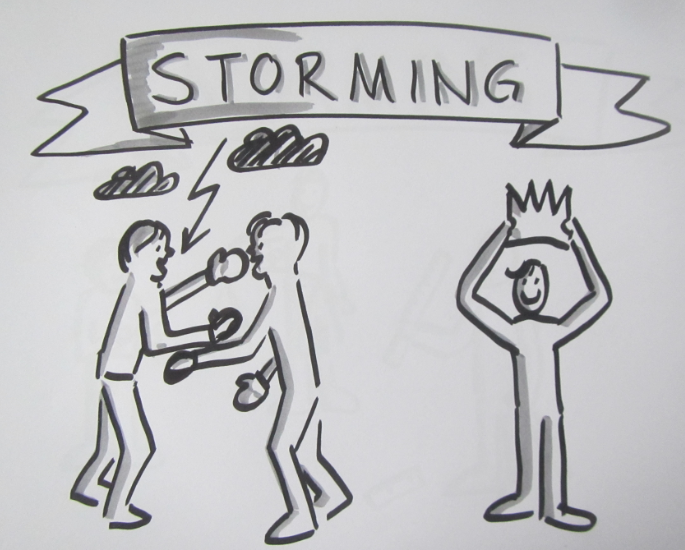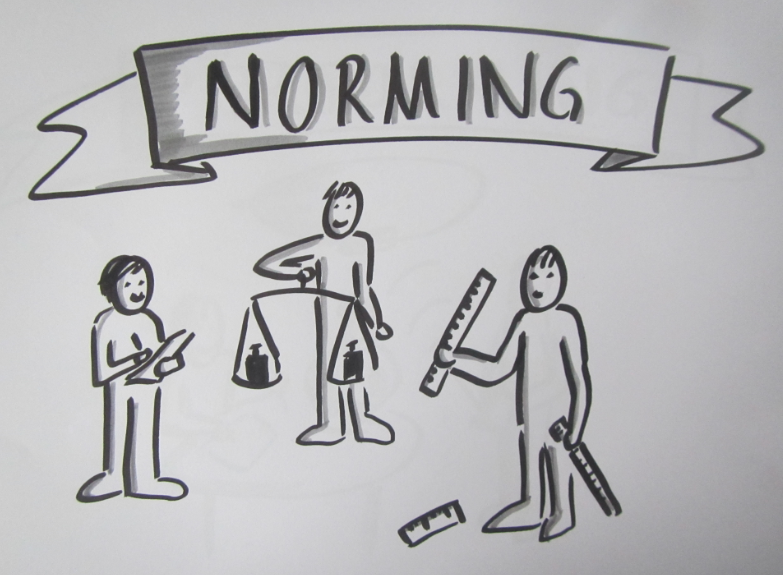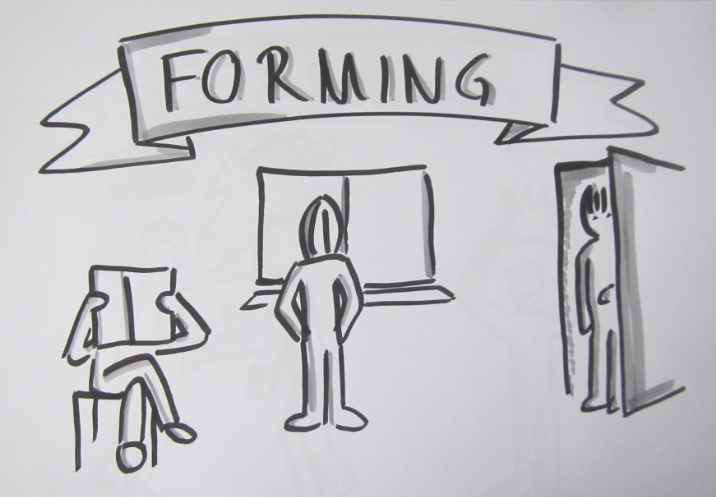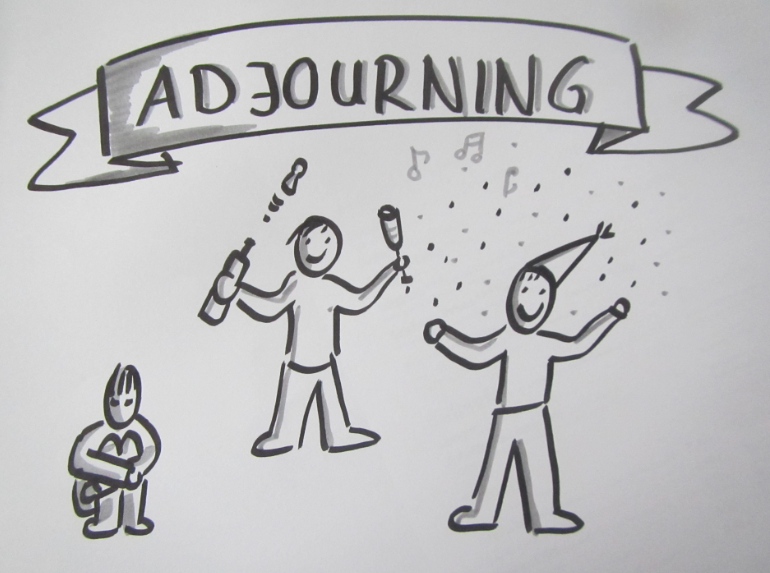In my last post, I talked about a model for stages of group development. Today I want to talk about how you can use this model when you are trying to make a group work together well.
First, it is important to recognize that every team will go through most of the phases. Except for the ones that get stuck in the storming phase, but then once we recognize that we are stuck in the storming phase (rather than despair that the group just won’t work well together ever), we can support them to get to the next stage.
So what kind of support might the groups need from their tutor at different stages?
1. Forming
During the forming stage, since participants don’t know each other, it is important that the tutor provides the structure in which the team will operate, and helps participants feel comfortable in the situation. It is helpful to make sure participants getting to know each other. Depending on how long the team will work together, how well participants know each other already, on group size and on personal preferences, a tutor might want to do sociometry or some other game to introduce participants to each other. Pretty similar to what you might want to do at any first day of class.
2. Storming
This is the most difficult phase, both for the tutor and for participants. Since there is so much conflict on so many different levels, it is very important that the the tutor models the behavior he or she wants. Be trustworthy, communicate openly, above all, stay constructive and positive.
Also, let participants know that this is an important phase. It is necessary to openly talk about conflicting interests, different preferences in how a group works, or different ideas of what the goal should be.
If there is conflict but it isn’t really clear what it is about, it is important to figure out whether it is something personal or where it is coming from, and then address it.
If this phase is skipped, even though the team might have a nicely structured hierarchy with clear roles, not everybody might be happy with his or her role, meaning that the conflict is going to erupt at some later stage and become destructive if not addressed properly.
It is helpful to remember – and to remind participants of – the rules for good feedback to solve the conflict constructively.

Group stage no 2: Storming.
3. Norming
When a group reaches this phase, the tutor can start to withdraw and only intervene occasionally, or, of course, provide support on the topic or methodological advice. But the group process is on a good way now and it is important that they find rules that work for them. If they think it’s cool to work all night once a week and then not at all over the next week, the tutor should let them be. They need to take ownership of how their group works and what their goal is, otherwise they won’t be as invested.

Group stage no 3: Norming.
4. Performing
Now the tutor should leave the team to work as independently as possible, only giving advice (advice! Not the solution!) when asked.
Except for when the tutor notices conflict – maybe the group has slipped back into the storming stage. Then it is important to address the conflict and go through a new norming phase, too, before continuing working on the task. Ignoring that a group has slipped back into the storming phase will only prolong that unproductive phase and maybe let a relatively minor conflict blow out of proportion just because nobody addressed it.
5. Adjourning
Here the tutor can participate in celebrations and even initiate them. But it is important to recognize that participants might be very sad to be leaving a team that worked well together and where they had a lot of fun together. So it is always helpful to have a couple of ideas at hand how either this team can come back together to work on new tasks, or where similar experiences can be had with other teams.
Happy group working! :-)


